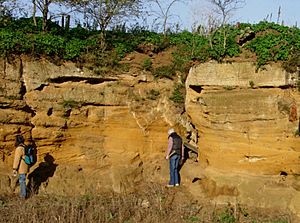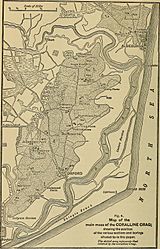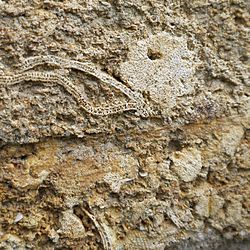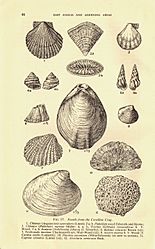Coralline Crag Formation facts for kids
Quick facts for kids Coralline Crag FormationStratigraphic range: Pliocene |
|
|---|---|

Coralline Crag Formation exposed in Suffolk, England.
|
|
| Type | Formation |
| Unit of | Crag Group |
| Underlies | Norwich Crag Formation |
| Overlies | Thames Group (unconformity) |
| Thickness | Up to 25 metres |
| Lithology | |
| Primary | Sand |
| Location | |
| Region | England |
| Country | United Kingdom |
| Extent | |
The Coralline Crag Formation is a special type of rock layer found in England. It is made of ancient marine (ocean) deposits. You can find it near the North Sea coast in Suffolk.
This formation is special because it contains lots of tiny bryozoan (small sea creatures) and mollusc (like snails and clams) pieces. These pieces form a type of sand and silty rock. It was laid down during a warm period at the start of the Pliocene Epoch. This time was part of the larger Neogene Period.
Where is the Coralline Crag Found?
Most of the Coralline Crag Formation on land is found around Aldeburgh and Orford. These towns are in Suffolk.
Smaller areas of this rock layer are also found in places like Boyton and Tattingstone. These are south of Orford. You can also find parts of it offshore near Sizewell.
What is "Crag"?
The word "Crag" is a local term. It means a type of sand that contains many shells. So, "Coralline Crag" means a shelly sand with coral-like fossils.
How Was it Used?
Historically, people in the Suffolk coast area used Coralline Crag for building. There are several old quarries where this rock was dug out.
One famous example is the tower of St Peter's Church in Chillesford. It is one of only two church towers built using this unique rock.




